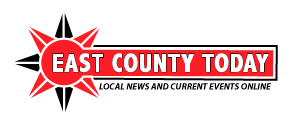SACRAMENTO, Calif. – The Division of Boating and Waterways (DBW) will begin herbicide treatment of water hyacinth and Egeria densa on March 1 in various areas of the Sacramento-San Joaquin Delta (Delta).
The division simultaneously will be treating the South American spongeplant, Uruguay water primrose, and Curlyleaf pondweed. Mechanical harvesting will continue to be used to control water hyacinth, spongeplant and water primrose infested areas as needed.
These aquatic invasive plants have no known natural controls in the west coast’s largest estuary, the Delta. Therefore, DBW operates “control” programs as opposed to “eradication” programs. It is likely that these plants will never be eradicated from the Delta. Partnerships with local, state and federal entities help the division better understand the plants, and implement new integrated strategic methods.
“With more partners, more crews, more equipment, and better mapping – all combined with Mother Nature’s assistance in the form of colder temperatures and higher flows,” said DBW’s Deputy Director Lynn Sadler, “We are working to make this our best treatment season.”
Below you will find a summary of the 2017 treatment season. The information is subject to change based on governmental requirements, weather conditions, plant growth, waterway traffic, special status species surveys and other conditions.
Floating Aquatic Vegetation Control Program: Water Hyacinth, Spongeplant and Water Primrose
Herbicide Control
Treatment Period:
Areas 2-4: March 1 — November 30
Area 1: June 1 — November 30
Potential Treatment Areas:Initially in and/or around, but not limited to the following areas: Fourteen Mile Slough, San Joaquin River, Empire Tract Slough, Middle River, Rock Slough, White Slough and Latham Slough. View Map
Herbicides: Glyphosate, 2,4-D, or Imazamox (Herbicides are registered for aquatic use with the US Environmental Protection Agency and the California Department of Pesticide Regulation)
Mechanical Harvesting
Treatment Period
January 2017 – April 2017
July 2017 – December 2017
Potential Harvesting Sites: Select areas of the Delta with high infestations or coverage of water hyacinth, spongeplant and/ or water primrose (as needed). View Map
Submersed Aquatic Vegetation Control Program: Egeria densa and Curly-Leaf Pondweed
Herbicide Control
Treatment Period: March 1 — July 2017. Treatment period based upon DBW field survey data, water temperatures and fishery surveys.
Treatment Areas — View Map: In and/ or around the following areas (individual areas will be noticed prior to treatment application):
Anchorages, boat ramps and marinas: Willow Berm, Korth’s Pirates Lair, Perry’s Boat Harbor, Rivers End, Big Break Marina, Delta Marina Rio Vista, B & W Resort, Vieira Resort East, Sacramento Marina, and Snug Harbor.
Near Old River: Latham Slough, Old River, Discovery Bay, Piper Slough, Sandmound Slough, and Taylor Slough.
Stockton Area: Atherton Cove, Duraflame, Buckley Cove, Fourteenmile Slough, Mosher Slough, Pixley Slough, Disappointment Slough, Bishop Cut, White Slough, and Honker Cut.
Sacramento Area: The Meadows, Cache Slough, Barker Slough, and Lindsey Slough.
Herbicide: Fluridone.
Mechanical Harvesting
This type of control method is not used for submersed aquatic vegetation. These types of plants spread by fragmentation. Cutting the plants back exacerbates the problem, as shreds of the plant float away and re-propagate.
All treated areas will be monitored weekly to ensure herbicide levels do not exceed allowable limits and that herbicide treatments have no adverse impacts on the environment, agriculture or public health in or near the planned treatment areas. Herbicides used in the control programs are registered for aquatic use with the U.S. Environmental Protection Agency and California Department of Pesticide Regulation. The public may view the public notices and sign up to receive weekly updates on this year’s treatment season on DBW’s website.
In 2016, DBW treated 4,296 acres of water hyacinth. With the help of Mother Nature, an early start in the treatment season, and an increased collaboration between local, state and federal entities, last year’s treatments greatly alleviated the impact that the aquatic invasive plants had on the daily lives of people and businesses along and near the Delta. Aerial images continued to be a valuable tool for identifying water hyacinth nursery areas and comparing infestation levels. Infestation levels of Egeria densa were also greatly reduced.
The hard work performed during the 2016 season will serve as a benchmark to determine the geographical impact and spread of the aquatic invasive plants. Nevertheless, there are still certain regions of the Delta that are repeatedly, heavily impacted. Sites with dead ends such as the Stockton Waterfront, tend to hold water hyacinth in the area longer due to no river flow, except tidal movements; west southwest and northwest winds, which prevail during spring, summer and fall season; and/ or being close to big nursery areas. DBW will continue working with its partners to better understand the plants, and implement new integrated strategic methods and using mechanical harvesters as needed.
Funding for DBW’s aquatic invasive plant control programs comes from the Harbors and Watercraft Revolving Fund, which receives revenues from boaters’ registration fees and gasoline taxes.
In 1982, California state legislation designated DBW as the lead state agency to cooperate with other state, local and federal agencies in controlling water hyacinth in the Delta, its tributaries, and the Suisun Marsh. The Egeria densacontrol program was authorized by law in 1997 and treatment began in 2001. In 2014, Spongeplant was authorized for control upon completion of the biological assessment and in 2015 curly-leaf pondweed was authorized under amendment to the Egeria densa control program.
Aquatic invasive plants negatively impacts Delta’s ecosystem as they displace native plants, block light needed for photosynthesis and reduce the amount of dissolved oxygen in the water. Continued warm temperatures help the plants proliferate at high rates. Plants are also known to form dense mats of vegetation creating safety hazards for boaters, obstructing navigation channels, marinas, and irrigation systems.
For more information or to view the public notices for the control programs, please visit DBW’s Aquatic Invasive Species Webpage.
Information provided by Supervisor Diane Burgis’s Office

